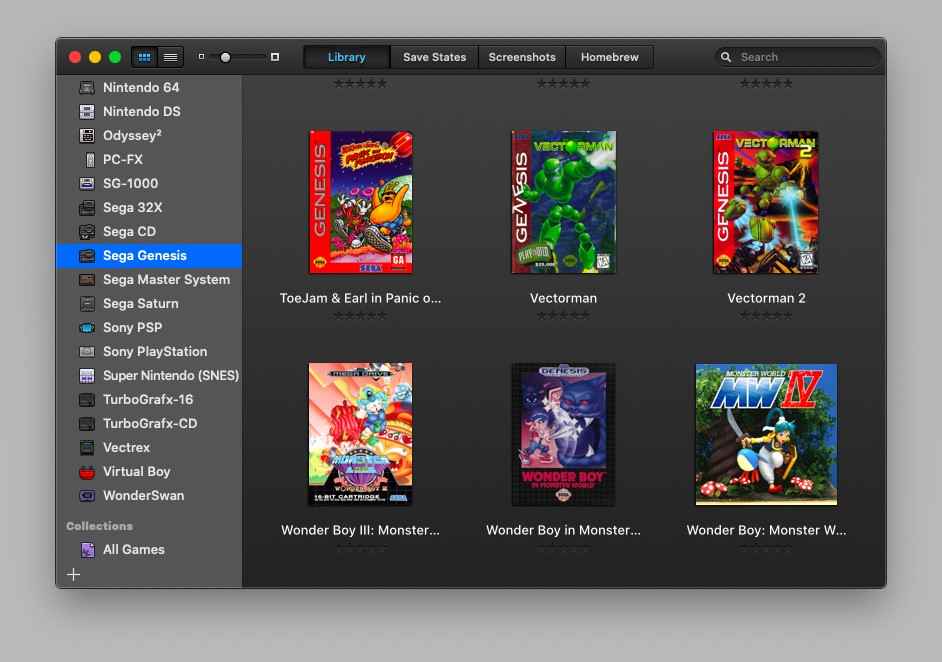

- #SNES EMULATOR MAC OS HOW TO#
- #SNES EMULATOR MAC OS INSTALL#
- #SNES EMULATOR MAC OS CODE#
- #SNES EMULATOR MAC OS ISO#
- #SNES EMULATOR MAC OS ZIP#
It will also supply cover art from the original game boxes, and correctly identify the game titles and metadata.
#SNES EMULATOR MAC OS ZIP#
You can even keep your ROMs in zip format OpenEmu will handle decompression. It does for ROMs what iTunes does for other media: basically it makes your game collection the focus, and tries to make the actual emulation seamless and transparent to the user. OpenEmu is a ROM library management and emulator front-end application.

That’s what enabled OpenEmu to come along and put a front-end on the emulation cores of a dozen or so different emulators. Thanks to the authors of those emulators, much of their work is open-source at this point too. Basically any living room console older than the year 2000, and all handhelds before the current generation (before 2011 or so). The lower-powered game consoles have all been well emulated by this point. Network play allows two (or more?) instances of Fceux to share game-state by continuously syncing, over the network. Optionally, we can build and run the server component, for network play. If you prefer Brew as your package manager, your paths here will be different (CFLAGS=-I/usr/local/include LDFLAGS=-L/usr/local/lib scons) $ CFLAGS=-I/opt/local/include LDFLAGS=-L/opt/local/lib scons On the line immediately after the “env” variable is set, add the following: env.Append(ENV = )įinally, we can build and run the emulator, but we have to add some more paths to the command line in order for the build process to find all the stuff we installed with MacPorts. Now, a small change to their Sconstruct file is necessary, to fix an issue with how they’re setting up the build environment.
#SNES EMULATOR MAC OS CODE#
Next, get the latest code from their repository: $ svn checkout svn://.net/p/fceultra/code/fceu/trunk fceultra-code April 2016 edit: I added pkg-config to this list of dependencies. At the time of this writing, you don’t want the latest Lua Fceux will fail to build.
#SNES EMULATOR MAC OS INSTALL#
I assume you already have XCode installed with the command-line tools, and that you’re using MacPorts to install open-source packages.
#SNES EMULATOR MAC OS HOW TO#
Let’s show how to build their source code on Mac OS X.įirst, we need to install all of the dependencies. Or, you might just want to have a version of Fceux that is not 18 months out of date, because the project hasn’t released a binary since 2013 despite the fact that bugs continue to get fixed. Unfortunately, some of those hacking features are exclusive to the Windows version currently (boooo), so maybe the project needs some help from Mac users. Basically it’s the “hacker’s choice” of NES emulator. There are other options for NES emulation on Mac OS X, but FCEUX offers tools for debugging, rom-hacking, map making, Tool-assisted movies, and Lua scripting.
#SNES EMULATOR MAC OS ISO#
I had only ISO images, so I had to re-rip a game in cuesheet format in order to successfully add it to my OpenEmu game library.įceux is a cross-platform, open-source NES emulator.

But, after I found a set of BIOS ROM images online, adding them this way still didn’t work. Searching around, I learned that you add the BIOS file(s) by dragging and dropping the *.bin files (BIOS ROM images) like you would a game ROM.

In my last post about OpenEmu I mentioned the “experimental” build that adds support for many more systems than the official release of the program.


 0 kommentar(er)
0 kommentar(er)
